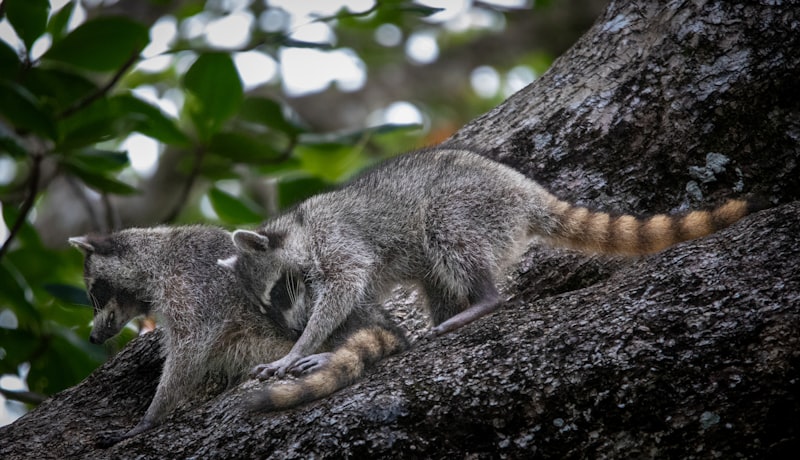Ever wondered how animals talk to each other without using words? Their communication methods range from the fascinating to the downright bizarre. Let’s dive into the incredible world of animal communication.
Take the humble honeybee, for instance. When a bee finds a rich nectar source, it returns to the hive and performs a “waggle dance” to inform its fellow bees about the location. This dance isn’t just for fun—it’s a precise form of communication that conveys direction and distance to the other bees. Imagine if we could dance our way to a new restaurant!
Then there are the African elephants, known for their powerful rumbling calls that can travel over long distances. These low-frequency rumbles are used to communicate with other herds miles away, allowing them to warn of danger or coordinate movements. It’s like having a built-in long-distance phone!
Moving to the ocean, dolphins are masters of high-pitched clicks and whistles. These sounds aren’t just for echolocation; they also serve as names within their pods. Dolphins develop unique signature whistles that function like calling out someone’s name in a crowded room. It’s their way of saying, “Hey, it’s me!”
In the forests of Borneo, orangutans use a variety of vocalizations and gestures to express themselves. From loud “kiss-squeaks” to long calls that can be heard up to a kilometer away, orangutans use these sounds to maintain social bonds and avoid conflicts. It’s like having a conversation with your friends from across the street!
Even ants have their own sophisticated ways of communicating. They leave chemical trails called pheromones as they forage for food, guiding other ants to the source. These trails can alert others to danger or lead them straight to a picnic spot, depending on the situation. It’s like leaving breadcrumbs with a secret scent message!
Whale Songs and Their Mystical Messages: Decoding Underwater Communication
Imagine diving into the deep blue, surrounded by the serene yet haunting sounds of whale songs. It’s as if these creatures are speaking in a language all their own, one that resonates through the ocean currents. Each species of whale has its unique repertoire of songs, often used for various purposes such as mating calls, establishing territory, or even just socializing within their pods.
Researchers have spent years deciphering these mysterious messages encoded in the whale songs. Through advanced technology and dedicated observation, they’ve uncovered that these songs are not mere random sounds but structured sequences with distinct patterns. It’s akin to uncovering a musical masterpiece composed by nature itself, where each note and rhythm holds significance.
Whale songs also play a crucial role in the cultural and social fabric of whale communities. They help maintain bonds within pods and convey emotional states, much like how humans use language to express feelings and intentions. This sophisticated form of communication underscores the intelligence and complexity of these marine giants.
Moreover, studying whale songs provides valuable insights into the health of ocean ecosystems. Changes in song patterns can indicate shifts in migration patterns, population dynamics, or the impact of environmental factors like climate change and human activities on marine life.
Ants’ Chemical Conversations: How Tiny Pheromones Coordinate Massive Colonies
Imagine a bustling city where everyone knows their role without needing a word spoken. Ant colonies operate similarly, guided by pheromones that act as chemical signals. When an ant discovers a food source, it releases pheromones along its path back to the colony. These pheromone trails serve as a map, guiding other ants directly to the food, ensuring efficient resource gathering.
But pheromones do more than just lead ants to food. They also regulate complex behaviors like nest construction and even social interactions. For instance, ants use specific pheromones to distinguish between nestmates and intruders, maintaining colony security. This chemical language allows ants to respond swiftly to threats and challenges, fostering unity and resilience within the colony.

The effectiveness of pheromones lies in their simplicity and specificity. Each type of pheromone triggers a distinct response, allowing ants to convey precise information without ambiguity. It’s akin to a well-choreographed dance where every move communicates a specific message, ensuring the colony operates harmoniously despite its vast numbers.
In essence, ants’ chemical conversations exemplify nature’s ingenuity in communication. Through pheromones, these tiny insects achieve feats that would be challenging for larger, more complex organisms. They demonstrate how simplicity, when coupled with precision, can lead to extraordinary collective achievements.
Next time you see ants marching in a straight line or forming intricate patterns, remember that beneath their tiny bodies lies a sophisticated system of communication—one that underscores the power of cooperation and coordination in the natural world.
The Secret Sign Language of Octopuses: How They ‘Talk’ with Color Changes

Imagine diving into the depths where an octopus resides. As you observe, its skin ripples with a myriad of colors – vibrant reds, blues, and even subtle shades like pink and green. Each hue isn’t merely a random display; it’s a deliberate message, an expression of the octopus’s mood, intentions, and reactions to its environment.
These color changes aren’t static; they flow across the octopus’s body like a fluid conversation. When feeling threatened, it might flash bold patterns of black and white to warn predators or blend seamlessly into the background using shades that mimic the surrounding coral or rocks. In moments of curiosity or playfulness, its colors might shift rapidly, akin to a playful dance of light and shadow.
Scientists have unraveled some of the meanings behind these color displays. A sudden darkening could signal aggression or fear, while a soft, pulsating pattern might indicate calm or contentment. Each octopus species has its own dialect, using unique combinations of colors and patterns that distinguish them from their peers.
Interestingly, this color communication isn’t just limited to basic signals. Octopuses can also use it for intricate social interactions. During courtship, males might display specific patterns to attract females, signaling their readiness to mate. This visual dialogue is crucial in the complex underwater world where sound travels poorly, making visual cues indispensable.
Understanding this secret sign language of octopuses reveals not only their intelligence but also the depth of their social and emotional lives. It challenges us to rethink communication beyond our human-centric views, appreciating the rich tapestry of languages that exist in nature – even those hidden beneath the waves.
The color-changing abilities of octopuses aren’t just a marvel of nature; they’re a testament to the diversity of life on Earth. By decoding their vibrant displays, scientists continue to uncover the nuances of their behavior and the intricate ways they navigate their underwater realm.
Dolphin Dialogues: Understanding the Complex Vocalizations of Marine Mammals
Imagine diving into the deep blue ocean and encountering a pod of dolphins. As you watch them glide effortlessly through the water, you might hear a symphony of clicks, whistles, and squeaks. These sounds are not random; they form a sophisticated language that dolphins use to convey messages and maintain social bonds.
In their underwater world, where visibility is limited, sound plays a crucial role. Dolphins emit clicks, which are highly focused sound pulses, to navigate and locate objects by echolocation. This ability not only helps them find prey but also aids in avoiding predators and navigating through their environment with precision.
Beyond echolocation, dolphins use whistles for social communication. Each dolphin has its signature whistle, akin to a name, which it uses to identify itself to others in the pod. These whistles are thought to convey emotional states and intentions, fostering social cohesion and cooperation among pod members.
Researchers have discovered that dolphin vocalizations can be surprisingly complex. They exhibit a form of syntax, arranging their whistles and clicks in specific sequences that convey different meanings. It’s almost as if they are engaging in conversations, exchanging information about food, danger, play, and social hierarchy.
Studying dolphin dialogues not only provides insights into their intelligence but also raises questions about the evolution of language in animals. How did these marine mammals develop such a sophisticated means of communication? What parallels can we draw between dolphin dialogues and human languages?
As we delve deeper into the world of dolphins and their vocalizations, one thing becomes clear: these magnificent creatures have much more to say than meets the eye—or the ear. Understanding their complex language opens doors to understanding their behavior, social structures, and the intricacies of life in the vast ocean.
Bee Waggle Dance: Unveiling the Sophisticated Navigation System of Honeybees
Have you ever wondered how tiny honeybees manage to find their way back to the hive from miles away? It’s not just instinct; it’s a dance of precision and communication known as the “Bee Waggle Dance.” This remarkable behavior isn’t just a spectacle; it’s a sophisticated navigation system that allows honeybees to communicate detailed information about food sources to their fellow hive members.
The waggle dance involves intricate movements that convey the direction, distance, and quality of a food source relative to the position of the sun. Picture this: a honeybee returning to the hive after discovering a rich patch of flowers performs a waggle dance on the vertical surface of the honeycomb. The angle of the dance relative to the vertical comb indicates the angle of the food source relative to the position of the sun. For example, if the dance is performed straight up, the food source is directly towards the sun. If it’s performed at a 45-degree angle to the right, the food source is 45 degrees to the right of the sun’s position.
But that’s not all; the duration of the waggle phase correlates with the distance of the food source. A longer waggle duration indicates a greater distance, while a shorter one means it’s closer to the hive. Imagine honeybees decoding these dance moves to navigate efficiently and maximize their foraging efforts.
This dance isn’t just about food; it’s a testament to the incredible communication abilities of honeybees, showcasing a level of sophistication that rivals many human systems. It’s a dance of survival, ensuring the colony’s well-being through effective resource utilization and navigation. Next time you see a honeybee buzzing around, remember the intricate dance it might be performing to guide its sisters to the sweet nectar waiting to be harvested.
Elephants’ Infrasound Symphony: Communicating Across Vast Distances
Elephants, those gentle giants of the savannahs and forests, possess a unique ability to produce infrasound—a type of low-frequency sound that travels much farther than higher frequencies. Infrasound waves can traverse through dense vegetation and over long distances, making them ideal for communication in the vast landscapes elephants call home.
At the heart of this symphony lies a language of deep rumbles and vibrations, each carrying its own meaning. These infrasonic calls can convey emotions, intentions, and even warnings to other elephants kilometers away. Picture it as nature’s long-distance phone call, where these majestic creatures exchange information crucial for survival and social cohesion.
Research has shown that elephants use infrasound not only to coordinate group movements but also to reunite with separated herd members or warn of approaching dangers like predators or human activity. The complexity of these communications rivals that of any human language, albeit in a form imperceptible to our ears without specialized equipment.
What’s truly awe-inspiring is how elephants adapt these infrasonic calls to their environment. Much like tuning a musical instrument to resonate in harmony with its surroundings, elephants adjust the frequency and amplitude of their calls to optimize transmission through different terrains, whether it’s the open savannah or the dense rainforest.
Next time you find yourself in the presence of elephants—or even just pondering the wonders of the natural world—think about their infrasound symphony. It’s a testament to the intelligence and adaptability of these magnificent animals, their ability to communicate across vast distances in ways that continue to fascinate and inspire us all.
Fireflies’ Flashing Morse Code: Illuminating the Night with Love Signals
Fireflies communicate through a mesmerizing display of bioluminescence, akin to Morse code in the air. Each flicker and flash isn’t just random; it’s a carefully orchestrated message in the language of light. Imagine them as nature’s own signal towers, broadcasting love notes across the quiet landscape.
The males, typically the ones doing the flashing, use their light patterns to attract potential mates. Their flashes are like a unique love language, where the rhythm and intensity of their glow convey their readiness and vigor. It’s a spectacle of courtship that unfolds nightly, as they flutter and flash in synchronized harmony.
But fireflies aren’t just about romance; their lights also serve as a warning to predators. Their bioluminescence isn’t just for show; it’s a defense mechanism too. By flashing in unison or emitting sudden bursts of light, they startle would-be attackers, giving themselves a chance to escape into the safety of the night.
Scientists have marveled at the complexity of firefly communication. Each species has its own distinct flash pattern, ensuring that signals don’t get crossed between different types of fireflies sharing the same habitat. It’s a testament to nature’s precision and the evolution of unique communication strategies.
So, next time you find yourself under a starlit sky, take a moment to watch the fireflies. Their silent conversations through flashes of light tell stories of attraction, survival, and the wonders of the natural world. It’s a reminder that even in the darkness, there’s beauty and brilliance waiting to be discovered.
Frequently Asked Questions
How do animals communicate without making sounds?
Animals communicate without making sounds through visual cues such as body language, gestures, and facial expressions. They also use chemical signals like pheromones to convey messages to others of their species. Additionally, tactile communication through touch and vibrations plays a role in their interactions.
Which animals use chemical signals for communication?
Learn about animals that use chemical signals for communication, a fascinating form of interaction in nature. Discover how various species, from insects to mammals, utilize pheromones and other chemicals to convey messages related to mating, territory marking, and social behaviors.
What are some unusual ways animals communicate?
Explore unique animal communication methods, from bioluminescent displays in deep-sea creatures to infrasound signals of elephants. Discover how animals use scent trails for navigation and chemical cues to warn of danger.
What are examples of animal communication through body language?
Discover examples of how animals communicate through body language, from the intricate dances of bees to the dominance displays of wolves. Explore how gestures and postures convey messages within species and across different environments.
Do animals have secret languages?
Explore whether animals communicate using secret languages, uncovering fascinating insights into their unique methods of conveying messages and the reasons behind these behaviors.


